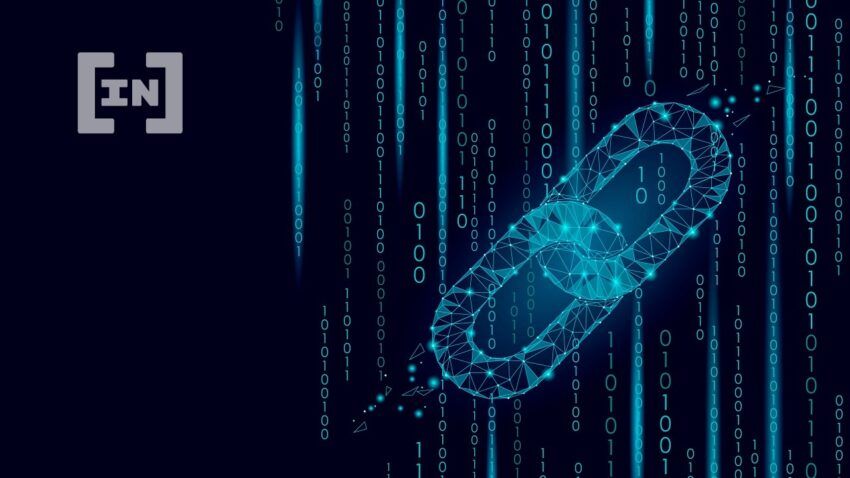Ethereum Virtual Machine (EVM) allows the ETH ecosystem to make use of smart contracts in a seamless manner. Here’s how.
Anybody even remotely associated with the crypto sector would have definitely heard of (or at least come across) the term ‘Ethereum,’ which can basically be described as a digital ecosystem boasting of a mature decentralized application (dApp) development ecosystem as well as a fully functional cryptocurrency – ala Ether (ETH).
However, what many people may not know is that the platform is powered by a rich technical framework powered by a module referred to as the Ethereum Virtual Machine (EVM) that allows the ETH ecosystem to make use of smart contracts in a seamless manner. In their most basic sense, smart contracts can be thought of as programs devised atop a blockchain network and capable of facilitating certain actions in an automated fashion – as and when certain predetermined conditions are satisfied.
In terms of its core utility, the Ethereum Virtual Machine (EVM) serves as the foundational base where developers can come up with a vast array of unique dApps. On a more technical front, it helps connect ETH accounts and smart contracts while offering a run-time environment that is not dependent on the use of powerful hardware machines – thus, making it ideal for beginner programmers.
Here’s why a deep understanding of the EVM matters…
Straight off the bat, it should be noted that the core purpose of the EVM is to ascertain the ‘state of the Ethereum network’ – i.e. existing operational parameters – in relation to each of its individual network blocks. To elaborate, Ethereum is quite similar to a whole host of other blockchain ecosystems, such that it comes with its very own token (ETH) as well as a distributed ledger system where a detailed account of each of its transactions is maintained.
That said, the Ethereum network features an additional layer of functionality thanks to its compatibility with smart contracts. This second layer is basically referred to as a “distributed state machine,” where all of ETH’s native accounts and balances are stored.
Additionally, since the Ethereum network is extremely dynamic in its overall functionality, it is capable of changing with each new block that is mined – something that happens as per a set of predefined rules. All of these rules determine the state of the network and are controlled by the EVM itself.
Ethereum Virtual Machine – the Benefits
While the Ethereum Virtual Machine affords users a whole host of benefits, the core utility of the module is to allow any developer to create their very own decentralized application (dApps). One prime example is that of non-fungible tokens (NFTs), a special class of crypto that harnesses the power of smart contracts and is compatible with the EVM. Through the use of these unique offerings, developers can not only create digital art, music, etc but also sell their work via decentralized marketplaces, thereby democratizing the way in which content is bought and sold globally.
The EVM also allows for the deployment of additional functionalities within a blockchain ecosystem, thereby ensuring users face minimal issues when operating within a distributed ledger environment. The isolation-driven design is that if any smart contracts operating within the network contain bugs, malware or POFs (point of failures), the base protocol remains totally unaffected – allowing for a high degree of operational security and privacy.
What are dApps and how are they made?
In their simplest sense, decentralized applications (dApps) are digital tools/programs that run on a distributed blockchain ecosystem or peer-to-peer (P2P) network consisting of several individual computers. As a result, they can operate outside the purview of a central administrative authority – a structure that is in direct opposition to how most networks, platforms work today (e.g. Facebook, PayPal, Twitter, etc).
Also, dApps can be utilized in relation to a wide array of purposes ranging from gaming to finance to social media. Since they are free from any third-party interference, they can help safeguard user privacy as well as offer an unparalleled level of censorship resistance. Since the entire blockchain landscape is fairly nascent, there are still issues related to scalability when it comes to dApp development. However, as things stand, there are many projects working exclusively to mitigate such issues.
When it comes to the creation of dApps, these offerings can be made to function within a number of operating environments while being entirely programmable (via the use of smart contracts).
Some pertinent aspects of dApps worth highlighting include:
- Elimination of issues related to system outages: Since the entire structure of a dApp relies on the use of a P2P-based framework, they can continue to function without any technical glitches even if one computer within the system is compromised (whatever may be the reason).
- Solid integration capabilities: Integrating with a wide range of cryptocurrency projects as well as other external tech agencies quite easily.
- Transparency and open-source: Independent developers (who may be working with limited resources) have the ability to build on their existing structure and come up with even better products.

What are Ethereum Virtual Machine-compatible blockchains?
As the name seems to quite clearly allude to, an EVM compatible blockchain is one that possesses the ability to access the state, transaction info, and smart contract specifications of the ETH network at any given moment (i.e. in real-time). As a result, the platform is able to harness the power of the ecosystem while adding extra features and functional aspects to it.
Some prominent EVM-compatible blockchains available in the market today include:
Avalanche
From the outside looking in, Avalanche is an open-source platform that can be used for the deployment of decentralized applications as well as enterprise-scale blockchain networks. Not only that, much like Cosmos, Avalanche is steeped in the ethos of interoperability and scalability. In fact, the project is touted to be the world’s first decentralized smart contracts platform built to power the global financial landscape — all while offering near-instant transaction finality rates.
Telos
Telos is a decentralized computing network that is powered by a highly efficient smart contract framework offering speeds in excess of 10,000 transactions per second – which is nearly 25X more than Ethereum’s current capabilities. Not only that, the system operates within a virtually fee-less environment, allowing for mass public consumption, especially amongst smaller retail investors working with limited capital.
Kusama
Kusama can be thought of as a public pre-production environment for the expansive Polkadot network, where developers have the option of experimenting and testing out new blockchains projects before releasing them for public use within the Polka ecosystem. To put it simply, Kusama acts as a sort of sandbox environment for early DOT-based projects, all while featuring a real cryptocurrency that can be freely traded on the open market. Operationally speaking, Kusama offers more flexible governance frameworks when compared with Polkadot.
Cosmos
Cosmos is a unique blockchain-based ecosystem designed primarily with the goal of promoting cross-chain interoperability as well as offering developers an extremely high level of scalability. As a result, the project seeks to create a sort of “internet of blockchains” where different networks (with separate functionalities) can interact with one another without any friction or technical glitches. The project makes use of a proof-of-stake (PoS) consensus scheme.
Got something to say about the Ethereum Virtual Machine or anything else? Write to us or join the discussion in our Telegram channel.
Disclaimer
In compliance with the Trust Project guidelines, this opinion article presents the author’s perspective and may not necessarily reflect the views of BeInCrypto. BeInCrypto remains committed to transparent reporting and upholding the highest standards of journalism. Readers are advised to verify information independently and consult with a professional before making decisions based on this content. Please note that our Terms and Conditions, Privacy Policy, and Disclaimers have been updated.


